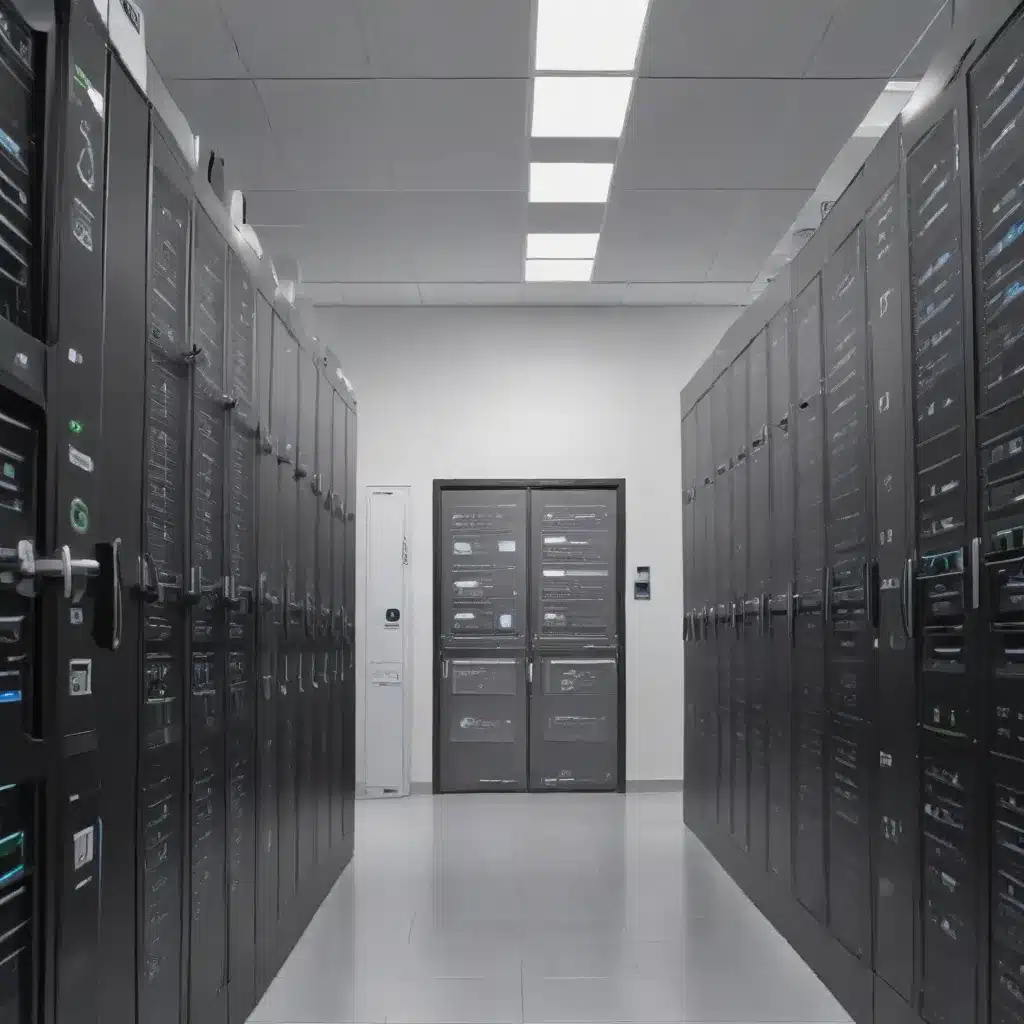
In the ever-evolving landscape of cloud computing, the challenge of efficient task scheduling and resource management has become increasingly crucial. As cloud data centers continue to expand, ensuring optimal energy utilization and fault tolerance has become a pressing concern for IT professionals. In this comprehensive article, we will delve into a cutting-edge approach that combines a hybrid Coati Optimization Algorithm (COA) and Osprey Optimization Algorithm (OOA) with fuzzy logic to tackle these challenges and drive energy efficiency in cloud data centers.
Addressing the Complexities of Cloud Task Scheduling
Cloud computing has revolutionized the way we access and utilize computing resources. However, with the growing demand for cloud services, the task of scheduling and managing workloads has become increasingly complex. Traditional scheduling algorithms often fall short in addressing the dynamic nature of cloud environments, where factors such as resource availability, user demands, and system failures can fluctuate rapidly.
To overcome these limitations, the proposed hybrid COA-OOA approach offers a robust and adaptable solution. By leveraging the strengths of both the COA and OOA algorithms, this method aims to optimize task scheduling, improve fault tolerance, and enhance energy efficiency in cloud data centers.
The Hybrid COA-OOA Algorithm: A Powerful Optimization Approach
The Coati Optimization Algorithm (COA) and the Osprey Optimization Algorithm (OOA) are two cutting-edge bio-inspired metaheuristic algorithms that have demonstrated remarkable performance in solving complex optimization problems. By combining these algorithms, the hybrid COA-OOA approach harnesses the complementary strengths of both methods to create a powerful task scheduling solution.
The COA is inspired by the foraging behavior of coatis, a species of raccoon-like animals. It excels at exploring the search space and identifying promising regions, making it well-suited for task scheduling in dynamic cloud environments. The OOA, on the other hand, is inspired by the hunting strategies of ospreys, a type of fish-eating hawk. It shines in exploiting local optimal solutions, ensuring that the scheduled tasks are efficiently assigned to the available resources.
By blending the exploration capabilities of the COA and the exploitation prowess of the OOA, the hybrid approach achieves a balance between global and local optimization, leading to more effective task scheduling decisions.
Integrating Fuzzy Logic for Fault Tolerance
While efficient task scheduling is crucial, it is also essential to address the issue of fault tolerance in cloud data centers. The proposed approach integrates fuzzy logic to enhance the system’s ability to detect and respond to faults, ensuring the reliable execution of tasks.
Fuzzy logic, a versatile mathematical framework, allows the system to handle the inherent uncertainty and imprecision inherent in cloud environments. By modeling the fault detection and recovery processes using fuzzy rules and membership functions, the system can make informed decisions on how to handle task failures and maintain high availability.
This integration of fuzzy logic with the hybrid COA-OOA algorithm provides a comprehensive solution that not only optimizes task scheduling but also enhances the overall fault tolerance of the cloud data center.
Enhancing Energy Efficiency through Intelligent Resource Utilization
Energy efficiency is a critical concern in the operation of cloud data centers, as the massive computational power and cooling requirements can lead to significant energy consumption and carbon footprint. The proposed approach addresses this challenge by leveraging the optimization capabilities of the hybrid COA-OOA algorithm to improve resource utilization and reduce energy waste.
By intelligently scheduling tasks and allocating resources based on the dynamic demands and energy consumption profiles, the system can optimize energy usage without compromising the quality of service. This includes techniques such as dynamic scaling of virtual machines, workload consolidation, and intelligent power management, all of which contribute to the overall energy efficiency of the cloud data center.
Practical Implementation and Real-World Benefits
The implementation of the hybrid COA-OOA and fuzzy logic-based task scheduling approach in cloud data centers can bring about tangible benefits for IT professionals and cloud service providers. Some of the key advantages include:
-
Improved Task Scheduling Efficiency: The hybrid algorithm’s ability to balance global exploration and local exploitation leads to more optimized task scheduling decisions, reducing makespan and response times.
-
Enhanced Fault Tolerance: The integration of fuzzy logic enables the system to detect and respond to faults more effectively, ensuring high availability and reliability of cloud services.
-
Energy Optimization: The intelligent resource utilization strategies driven by the hybrid algorithm and fuzzy logic contribute to significant energy savings, reducing the overall carbon footprint of cloud data centers.
-
Increased Customer Satisfaction: By delivering reliable, efficient, and energy-conscious cloud services, this approach can enhance the trust and satisfaction of cloud customers, leading to better business outcomes.
To put this innovative solution into practice, IT professionals can leverage the open-source resources and research papers available online, which provide detailed insights and implementation guidance. By adopting this hybrid COA-OOA and fuzzy logic-based approach, cloud data center operators can stay ahead of the curve, optimizing their infrastructure and ensuring a sustainable future for cloud computing.
Conclusion: A Transformative Approach to Cloud Task Scheduling
In the dynamic and energy-intensive world of cloud computing, the hybrid COA-OOA and fuzzy logic-based task scheduling approach presented in this article offers a transformative solution. By combining advanced optimization algorithms and intelligent fault tolerance mechanisms, this approach addresses the complex challenges faced by IT professionals in cloud data center management.
As cloud computing continues to play a pivotal role in our digital landscape, the adoption of this innovative solution can lead to significant improvements in task scheduling efficiency, fault tolerance, and energy optimization. By embracing this cutting-edge technology, cloud service providers can not only enhance their operational performance but also contribute to a more sustainable and environmentally-conscious future for the cloud industry.
To explore this topic further, we encourage you to visit the IT Fix website for more informative articles and expert insights on the latest advancements in cloud computing, IT solutions, and technology trends.












